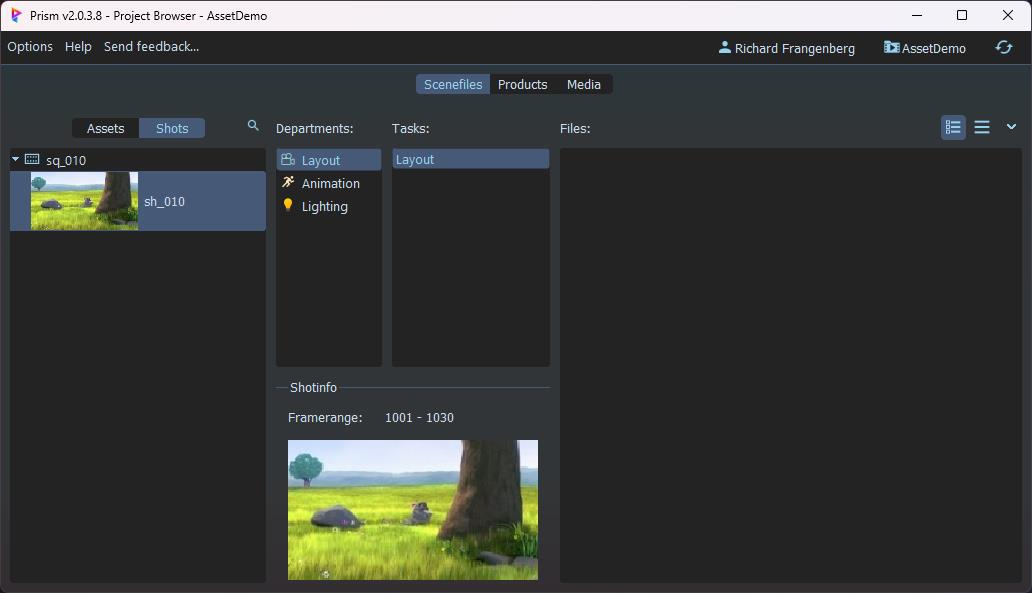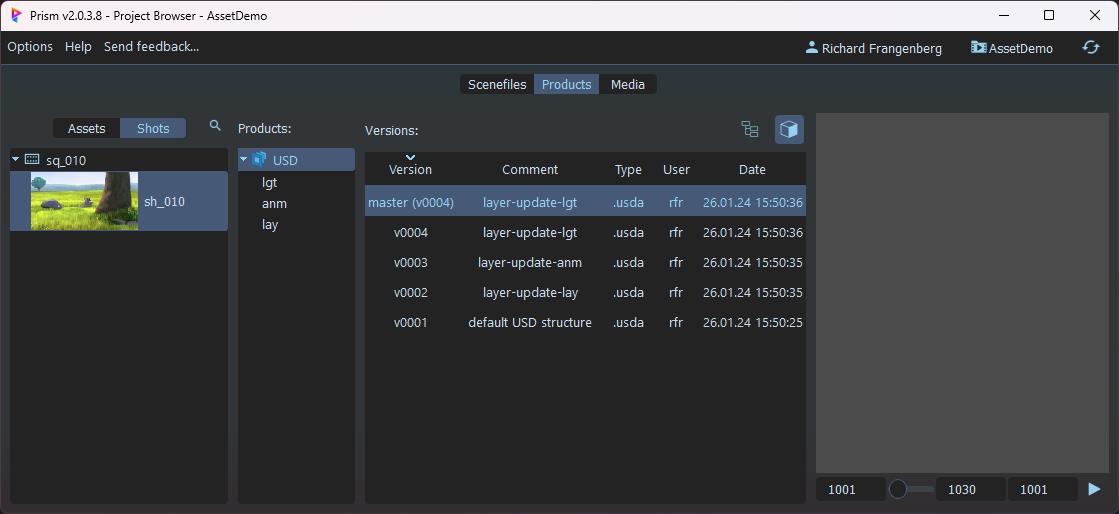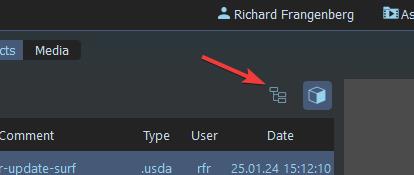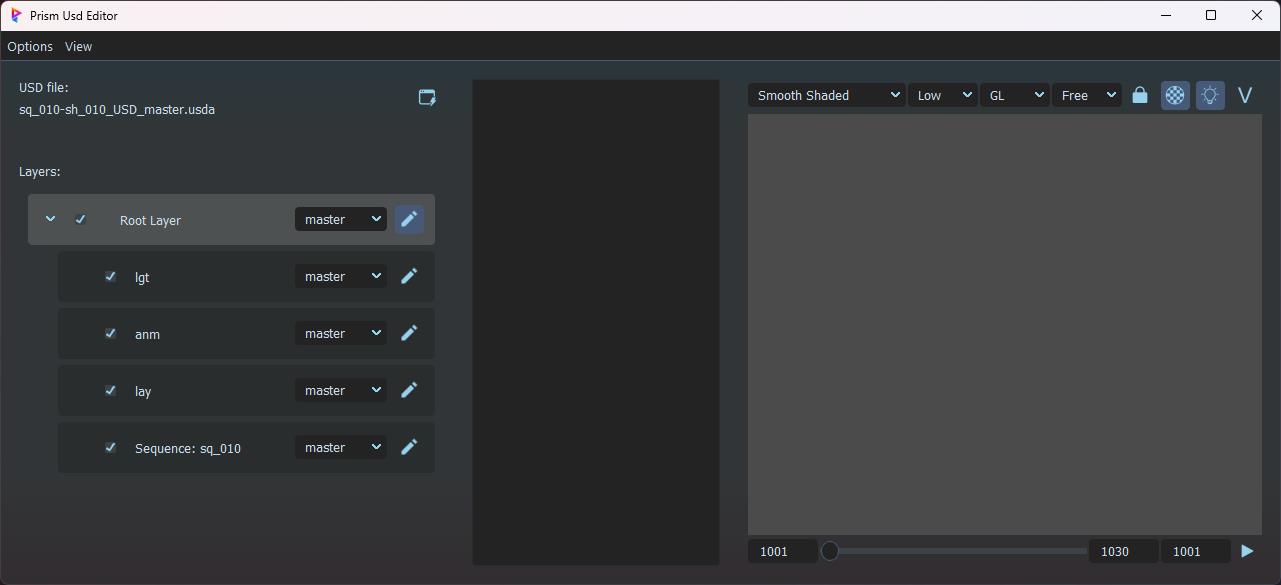USD shot workflow in Maya#
This guide explains the USD shot workflow in Prism and Maya.
Maya will be used for the layout, animation and lighting department, but you can also switch to different DCCs for one or more departments.
Shot Setup#
In your Prism Project Browser create a new shot and departments in the “Scenefiles” tab.

In the “Products” tab you can see that Prism automatically created a USD department layer for each department of your shot.
(If you don’t see the department layers, make sure you have the “Create USD department layers automatically” option enabled in the Prism Project Settings -> USD)

Select the latest version and press the little tree button on the right side above the version list.

This will open the Prism USD Editor, where we can examine the content of the USD shot.

We can see our department layers, but there are no assets in the shot yet.
Layout#
Save a new empty scene in the “Layout” department of our shot.
Doubleclick the USD Import button on the Prism shelf to import the latest shot USD file into your scenefile.
Singleclick the USD Import button on the Prism shelf to open the asset library from where you can import the rabbit asset.
(If you don’t have the Libraries plugin installed you will see the Product Browser instead.)
Import the asset as a reference into your existing USD stage.
Position the asset and create a camera.
Doubleclick the USD Export button on the Prism shelf to export the layout department layer.
In the Prism standalone Project Browser we can now navigate to our USD shot product and open it in the Prism USD Editor.
We can see our layout layer, which contains the camera and references the asset into our shot.
Animation#
Save a new empty scene in the “Animation” department of our shot.
Doubleclick the USD Import button on the Prism shelf to import the latest shot USD file into your scenefile.
To access the rig we must convert it to Maya data first.
Rightclick the
asset/rabbit/rig USD prim in the Outliner and select “Edit As Maya Data”.Animate the asset. Duplicate and animate the camera as well.
Select the
asset/rabbit/rig/rabbit/geo prim in the Outliner and doubleclick the USD Export button on the Prism shelf to export the animation department layer.In the Prism standalone Project Browser we can now navigate to our USD shot product and open it in the Prism USD Editor.
We can see our animation layer, which contains the asset and camera animation.
Lighting#
Save a new empty scene in the “Lighting” department of our shot.
Navigate to the latest version of the shot USD product in the Project Browser and import it from the context menu.
Import it as a USD layer into a new USD stage.
The lighting layer is set as the Edit Target in the Maya USD Layer Editor.
Rightclick the USD stage object and select “Add New Prism” -> “Scope”. Rename the new prim to “Lights”.
Create lights under this prim by selecting light types from the context menu under “Add New Prim” -> “All Registered” -> “Lighting”.
You can now render your scene or submit it to a renderfarm.
For this example however we will export the lighting layer to be able to view the final shot in Prism standalone or other DCCs.
Open the Prism State Manager, create an USD Export state, set the “Export Type” to “USD Layer” and set the “Layer” to your lighting layer.
Press the Publish button to export the lighting layer.
In the Prism standalone Project Browser we can now navigate to our USD shot product and open it in the Prism USD Editor.
We can see our lighting layer, which contains the the lights.
In the viewport we can see our complete shot. If Arnold is configured, you can select it as the renderer from the viewport context menu.
From the viewport context menu you can select “Render…”, which allows you to render the complete shot to disk.
At the moment this requires the Houdini Husk executable, which can be set in the Prism User Settings -> USD.
